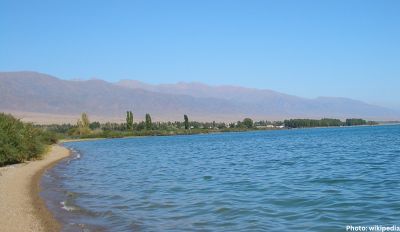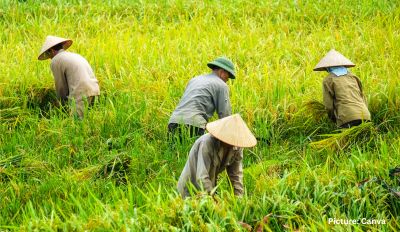Newswise — In 1973, a scientist stumbled upon a strange tree in the Amazon rainforest, unlike anything he’d ever seen. It was about 20 feet tall, with tiny orange fruits shaped like paper lanterns. He collected samples of the plant’s leaves and fruits, but all the scientists he showed them to wound up scratching their heads– not only were they unable to identify the plant as a species that had previously been described by scientists, but they couldn’t even declare it a new species, because they couldn’t tell what family it belonged to. But in a new study in the journal Taxon, scientists analyzed the plant’s DNA and determined where it belongs in the family tree of trees, finally giving it a name meaning “Mystery of Manu,” after the park in Peru it came from.
 “When I first saw this little tree, while out on a forest trail leading from the field station, it was the fruit — looking like an orange-colored Chinese lantern and juicy when ripe with several seeds — that caught my attention,” says Robin Foster, the scientist who originally collected the mystery plant in Peru’s Manu National Park, a retired curator at Chicago’s Field Museum and now a researcher with the Smithsonian Tropical Research Institute. “I didn’t really think it was special, except for the fact that it had characteristics of plants in several different plant families, and didn’t fall neatly into any family. Usually I can tell the family by a quick glance, but damned if I could place this one.”
“When I first saw this little tree, while out on a forest trail leading from the field station, it was the fruit — looking like an orange-colored Chinese lantern and juicy when ripe with several seeds — that caught my attention,” says Robin Foster, the scientist who originally collected the mystery plant in Peru’s Manu National Park, a retired curator at Chicago’s Field Museum and now a researcher with the Smithsonian Tropical Research Institute. “I didn’t really think it was special, except for the fact that it had characteristics of plants in several different plant families, and didn’t fall neatly into any family. Usually I can tell the family by a quick glance, but damned if I could place this one.”
Foster wasn’t the only one who couldn’t figure it out. Nancy Hensold, a botanist at the Field Museum, remembers him showing her a dried specimen of the plant more than 30 years ago. “I came to work at the Field Museum in 1990, and Robin showed me this plant. And I tried to get it identified using little fine technical characters like boiling up the ovaries of the flowers and taking pictures of the pollen, and after all that, we still didn’t know,” she recalls. “It really bugged me.”
The mystery plant sat in the Field Museum’s herbarium, a library of dried plant specimens, for years, but Hensold and her colleagues didn’t forget about it. “When you have a plant no one can put in a family, it can fall through the scientific cracks. I felt for it,” she says. The team eventually got a grant to study the plant, funded by the Field Museum’s Women’s Board, and the search was on.
The team attempted to analyze the plant’s DNA using the dried specimens, but when that didn’t work, they enlisted the help of Patricia Álvarez-Loayza, a scientist who works in the Manu National Park and has spent years monitoring the forest there, to find a fresh specimen of the plant. She did, and when the researchers back at the Field analyzed it in the museum’s Pritzker DNA Laboratory, they were shocked by what they found. “When my colleague Rick Ree sequenced it and told me what family it belonged to, I told him the sample must have been contaminated. I was like, no way, I just couldn’t believe it,” recalls Hensold.
The DNA analysis revealed that the mystery plant’s closest relatives were in the Picramniaceae family, which was a big deal to the botanists because it didn’t look anything like its closest relatives, at least at first glance. “Looking closer at the structure of the tiny little flowers I realized, oh, it really has some similarities but given its overall characters, nobody would have put it in that family,” says Hensold. The researchers sent specimens to Wayt Thomas, a curator emeritus at The New York Botanical Garden and an expert in Picramniaceae. “When I opened the package and looked at the specimens, my first reaction was, ‘What the heck?’ These plants didn’t look like anything else in the family,” says Thomas, the lead author of the paper in Taxon. “So I decided to look more carefully–once I looked really carefully at the tiny, 2-3 milimeter long flowers, things fell into place.” With the DNA finally revealing what family the plant belonged to, the researchers were able to give it a formal scientific name, Aenigmanu alvareziae. The genus name, Aenigmanu, means “mystery of Manu,” while the species name is in honor of Patricia Álvarez-Loayza, who collected the first specimens used for the genetic analysis. (It’s worth noting that while Aenigmanu alvareziae is new to scientists, it has long been used by the Indigenous Machiguenga people.)
The researchers say that finally getting a scientific classification for Aenigmanu alvareziae could ultimately help protect the Amazon rainforest in the face of deforestation and climate change. “Plants are understudied in general. Especially tropical forest plants. Especially Amazon plants. And especially plants in the upper Amazon. To understand the changes taking place in the tropics, to protect what remains, and to restore areas that have been wiped out, plants are the foundation for everything that lives there and the most important to study,” says Foster. “Giving them unique names is the best way to organize information about them and call attention to them. A single rare species may not by itself be important to an ecosystem, but collectively they tell us what is going on out there.”











